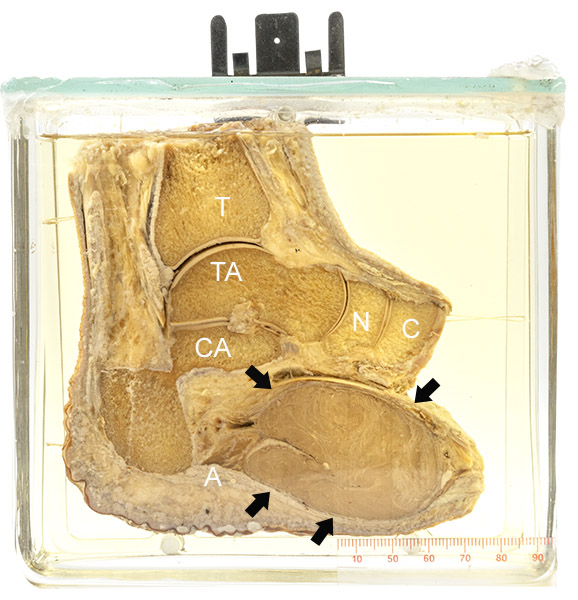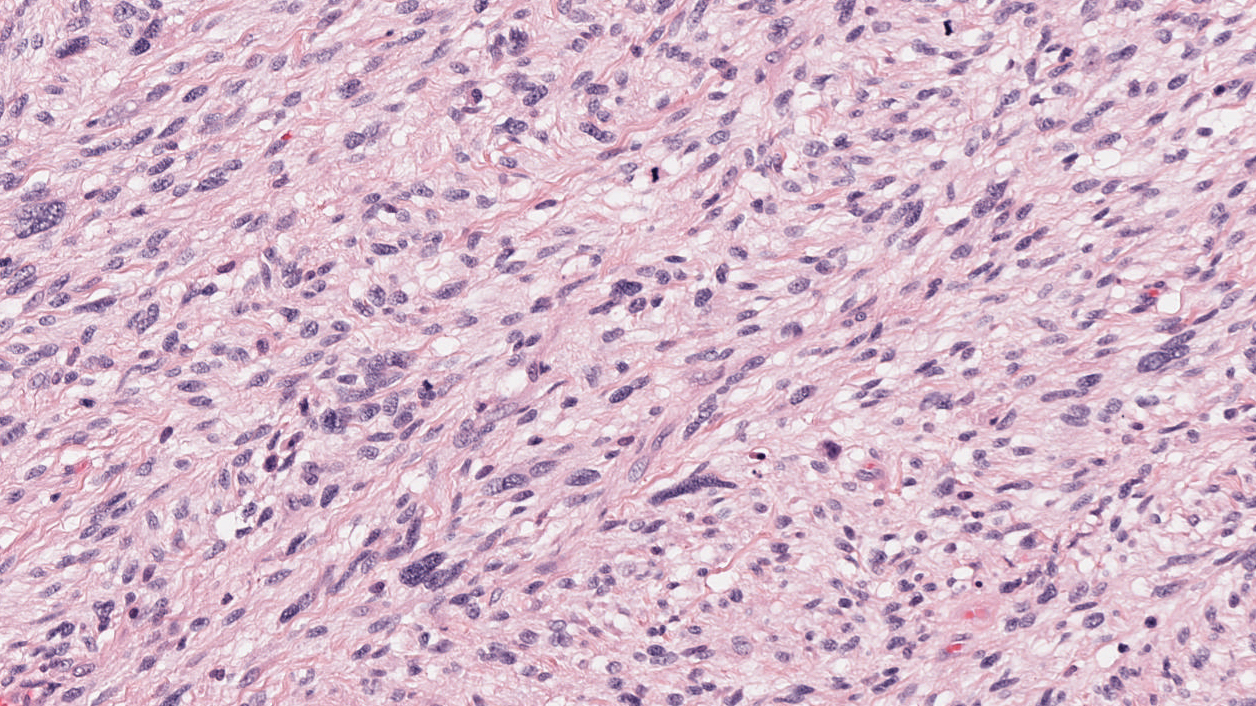
`
Age/sex: unknown age female
Size: 14.2 x 15.0 x 5.6 cm
The specimen consists of part of the ankle cut approximately in the midline from front to back
(T = tibia, TA = talus, CA = calcaneus).
A well-circumscribed tumor (arrows) is present between the navicular (N) and cuneiform (C) bones and the plantar aponeurosis (A).
Soft tissue sarcoma
Sarcomas are malignant tumors (cancers) that arise from cells of mesenchymal (connective tissue) origin. They are distinguished from carcinomas, which arise from epithelial cells lining a hollow organ or gland, and lymphomas or leukemias (that arise from blood cells). Many sarcomas show histologic features of one connective tissue type, such as bone, cartilage, or fat; when they do, they can be given specific names, such as osteosarcoma, chondrosarcoma, or liposarcoma, respectively.
Other sarcomas are difficult to categorize precisely on histologic appearances alone, in which case they may be classified simply on the basis of grade: low-grade tumors show features suggesting slow growth and a limited ability to invade locally or spread elsewhere (metastasize) whereas high-grade tumors have features suggesting a more aggressive behaviour and a worse outcome. Although we do not know what the tumor in this specimen looked look histologically, its well-circumscribed appearance implies little if any invasion of the adjacent normal tissue, suggesting that the designation “low-grade” is appropriate.
Below: Histology of a high-grade sarcoma.
Source: Fraser, R. (2023). High-grade sarcoma.
